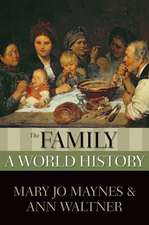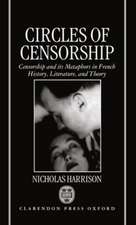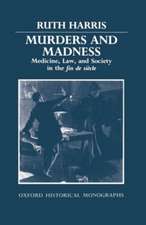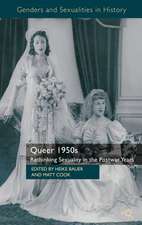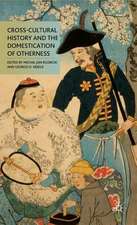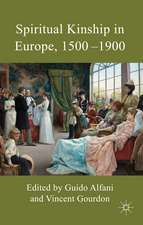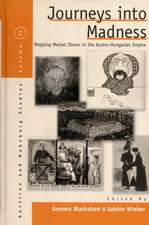Ceremonial Culture in Pre–Modern Europe
Autor Nicholas Hoween Limba Engleză Paperback – 14 ian 2007
The perceptively analyzed case studies in this volume constitute a reader's guide on how to interpret ritual and other ephemeral forms of celebration, as well their concrete manifestation in the visual arts.--Patricia Fortini Brown, Princeton University
A ground-breaking collection of compelling and wonderfully cohesive essays, which sets the standard for future study of ceremonial culture. Nicholas Howe and his collaborators are to be congratulated for having revealed so many of the ways in which this operated as a force for both continuity and change in pre-modern Europe.--Alastair Minnis, Yale University
The essayists in this volume identify and recover the excitement and dynamism that characterized ceremonial culture in pre-modern Europe. Each turns to key issues: the relation between public and private space, the development of fully-realized dramas and rituals from earlier forms, and the semiotic code that ceremonies manifested to their audiences. Their subjects include the Adventus procession at Chartres; Epiphany and Palm Sunday rituals in medieval Moscow; the staged entry of the future Emperor Charles V into Bruges in 1515; and ceremonies in Italian Renaissance cities interpreted through the lens of Renaissance optical theory. What emerges from each essay is a deeper understanding that any ceremony is, finally, an attempt to close the divide between abstract and literal, ideal and actual.
Preț: 195.47 lei
Nou
Puncte Express: 293
Preț estimativ în valută:
37.41€ • 39.00$ • 31.09£
37.41€ • 39.00$ • 31.09£
Carte tipărită la comandă
Livrare economică 20 martie-03 aprilie
Preluare comenzi: 021 569.72.76
Specificații
ISBN-13: 9780268030759
ISBN-10: 0268030758
Pagini: 168
Dimensiuni: 152 x 227 x 17 mm
Greutate: 0.26 kg
Ediția:1
Editura: MR – University of Notre Dame Press
ISBN-10: 0268030758
Pagini: 168
Dimensiuni: 152 x 227 x 17 mm
Greutate: 0.26 kg
Ediția:1
Editura: MR – University of Notre Dame Press
Recenzii
“In many ways these essays work well together and demonstrate some of the new understandings of premodern use and reception of ceremony and ritual. . . This erudite and comparative collection of scholarship on ritual and ceremony in premodern Europe, although probably too advanced for undergraduate students, does offer interesting insights to scholars who work on this subject.” —Journal of World History, March 2010
“This impressive collection of essays brilliantly illuminates aspects of ceremonial culture in early modern Europe. The book will serve a broad circle of scholars in the fields of medieval and early modern cultural studies, art history and iconography, drama and performance history, social history, and the history of religion.” —The Sixteenth Century Journal, vol. XXXIX no. 4 (Winter 2008)
“In this volume, Nicholas Howe has assembled a valuable collection of essays, each one of which contributes to our understanding of ceremonial culture. . . . Every one of these essays offers original perspectives on ceremonies in general-how they might have worked; what their purposes were; how they might effect change as well as preserve and create traditions . . . . Scholars of religious, social and art history, as well as of ceremony, in the medieval and early modern periods, will read this volume with great profit.” —English Historical Review, cxxiii, 502 (June 2008)
“These four essays, introduced by the late Nicholas Howe, treat the court ceremony surrounding entries and the role of visual culture in shaping sacred and civic processions. The book is well illustrated, befitting a work that attempts to close the gap between the ephemeral, abstract world of ceremony and the actual, literal world of the event itself. All contributions explore what it meant to be a spectator to such processions, thereby expanding the previous scope of scholarly studies.” —Renaissance Quarterly, Summer 2008
Notă biografică
NICHOLAS HOWE (1953–2006) was professor of English at the University of California, Berkeley, and the author and editor of several books, including Migration and Mythmaking in Anglo-Saxon England (Notre Dame Press, 2001).
CONTRIBUTORS: Nicholas Howe, Margot Fassler, Michael S. Flier, Gordon Kipling, Edward Muir.
Descriere
"In this volume, Nicholas Howe has brought together original and important essays focusing on medieval and early modern processions in Western Europe. The contributors share numerous insights that will interest scholars in anthropology, history of religion, performance history, social history, medieval and Early Modern studies, and art history." —Diane Wolfthal, Arizona State University
“The perceptively analyzed case studies in this volume constitute a reader's guide on how to interpret ritual and other ephemeral forms of celebration, as well their concrete manifestation in the visual arts.” —Patricia Fortini Brown, Princeton University
“A ground-breaking collection of compelling and wonderfully cohesive essays, which sets the standard for future study of ceremonial culture. Nicholas Howe and his collaborators are to be congratulated for having revealed so many of the ways in which this operated as a force for both continuity and change in pre-modern Europe.” —Alastair Minnis, Yale University
The essayists in this volume identify and recover the excitement and dynamism that characterized ceremonial culture in pre-modern Europe. Each turns to key issues: the relation between public and private space, the development of fully-realized dramas and rituals from earlier forms, and the semiotic code that ceremonies manifested to their audiences. Their subjects include the Adventus procession at Chartres; Epiphany and Palm Sunday rituals in medieval Moscow; the staged entry of the future Emperor Charles V into Bruges in 1515; and ceremonies in Italian Renaissance cities interpreted through the lens of Renaissance optical theory. What emerges from each essay is a deeper understanding that any ceremony is, finally, an attempt to close the divide between abstract and literal, ideal and actual.





